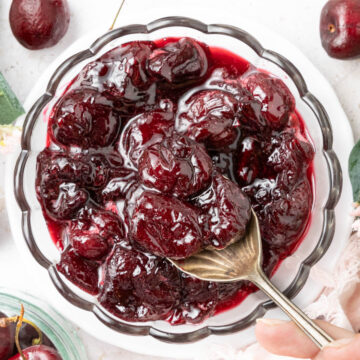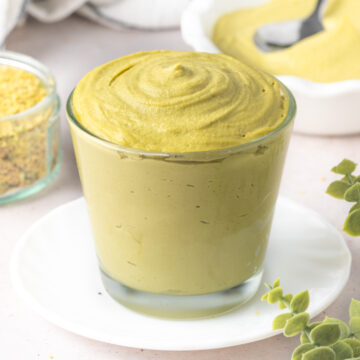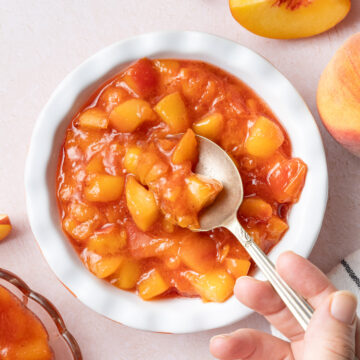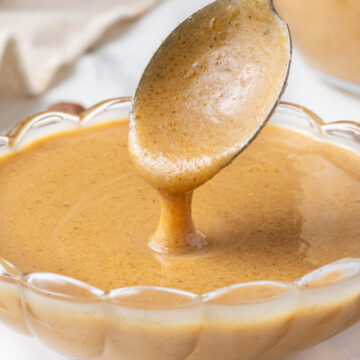This Dark Chocolate Namelaka Cream is incredibly silky and intense in chocolate flavours, with a delicious melt-in-your-mouth texture. It is a great chocolate cream that can be used as a cake and pastries filling or frosting.
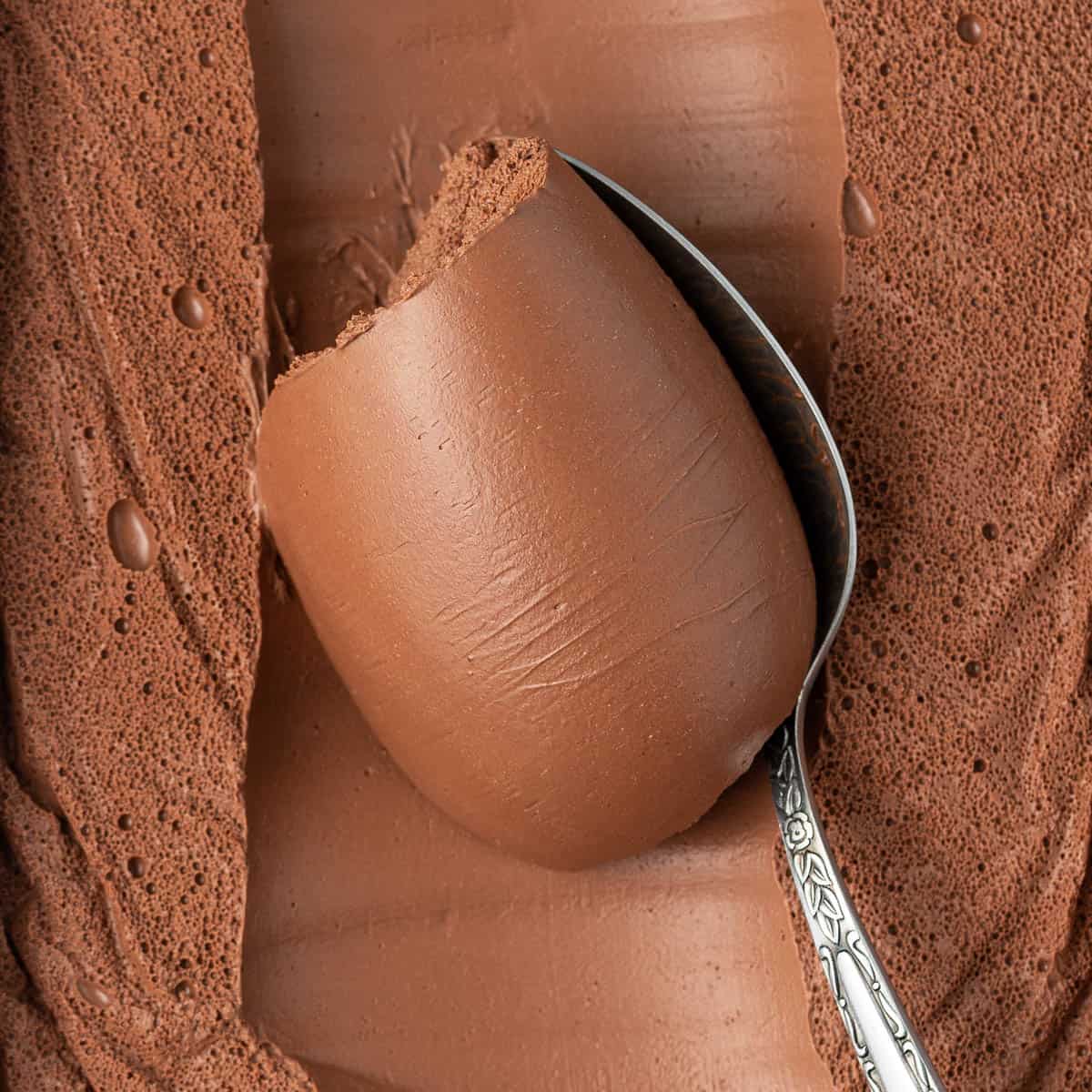
Jump to:
Why we love this recipe
You may have never heard of Namelaka but once you've tasted it, there is no coming back. You will want to make it over and over again!
This cream is like a perfect mix between the richness of a Chocolate Ganache, the silkiness of a Chocolate Crémeux and the creamy texture of a Chocolate Pastry Cream.
This rich chocolate cream has the most incredible texture that melts in your mouth and has an extremely shiny appearance. This namelaka recipe is also super easy to make with 4 ingredients only - no butter, no flour and no added sugar are required here!
What is Chocolate Namelaka
Namelaka, sometimes called "inverted ganache", is a type of chocolate cream invented by Ecole Valrhona. The word "Namelaka" means "Smooth" or "Creamy" in Japanese. A very fitting name for this chocolate cream!
It is made from Couverture Chocolate (or good quality cooking chocolate), Milk, Cream and Gelatine.
You can use Namelaka to fill your favourite pastries, to make Entremets or Mousse Cakes, to use as a cake frosting or filling or even on its own as a dessert.
Namelaka is deliciously soft but perfectly stable to it can be piped to decorate any of your sweet creations too.
Ingredients
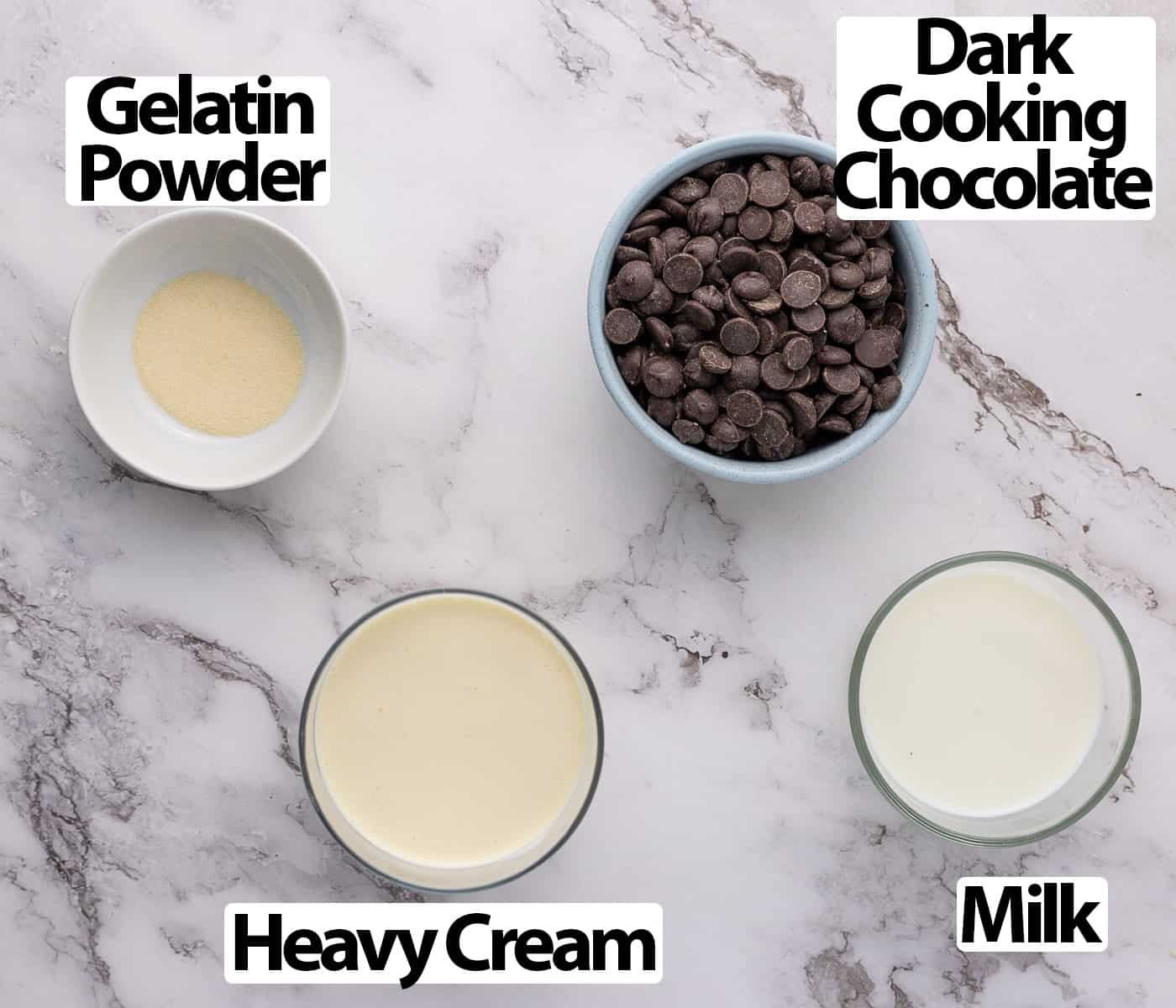
Scroll down to recipe card below for all quantities
What is Namelaka made of:
- Milk: you will need to use Full Cream / Whole Milk for the best texture and flavours. The milk is warmed up to dissolve the gelatine and melt the chocolate.
- Chocolate: I used a 70% Dark Chocolate. The type of dark chocolate you use is really important here so try to use the best quality chocolate possible - preferably couverture chocolate. If you don't have access to couverture, use a good quality cooking chocolate.
- Gelatine: I used powder but gelatine sheets will work too (just bloom it as required). You will need a little bit of cold water to rehydrate the powder. Depending on how you plan on using the cream, you can use more or less gelatine.
- Cream: cold Thickened / Heavy Cream (or cold whipping cream / double cream in the UK) - a cream that contains at least 30% fat content.
There is no added sugar here so the level of sweetness will solely be based on the type of chocolate you use (the higher percentage of cocoa mass, the more intense in flavour).
Alternatively, you can add a little bit of Honey or liquid Glucose Syrup to the Milk while it warms up to bring extra sweetness as well extra smoothness.
Flavour Variation
- Use a different Chocolate: this recipe uses a 70% dark chocolate but you can also use white or milk chocolate. Or even use a specialty chocolate like caramelised white chocolate or dulcey chocolate! Note that the ratios of chocolate will vary based on their cocoa butter content.
- Infuse the Milk: where the fun parts begin! You can flavour namelaka with a variety of ingredients by infusing the warm milk with spices such as cinnamon, citrus and lemon zest, vanilla bean, tonka bean, coffee or anything you want, really!
How to make Namelaka step-by-step
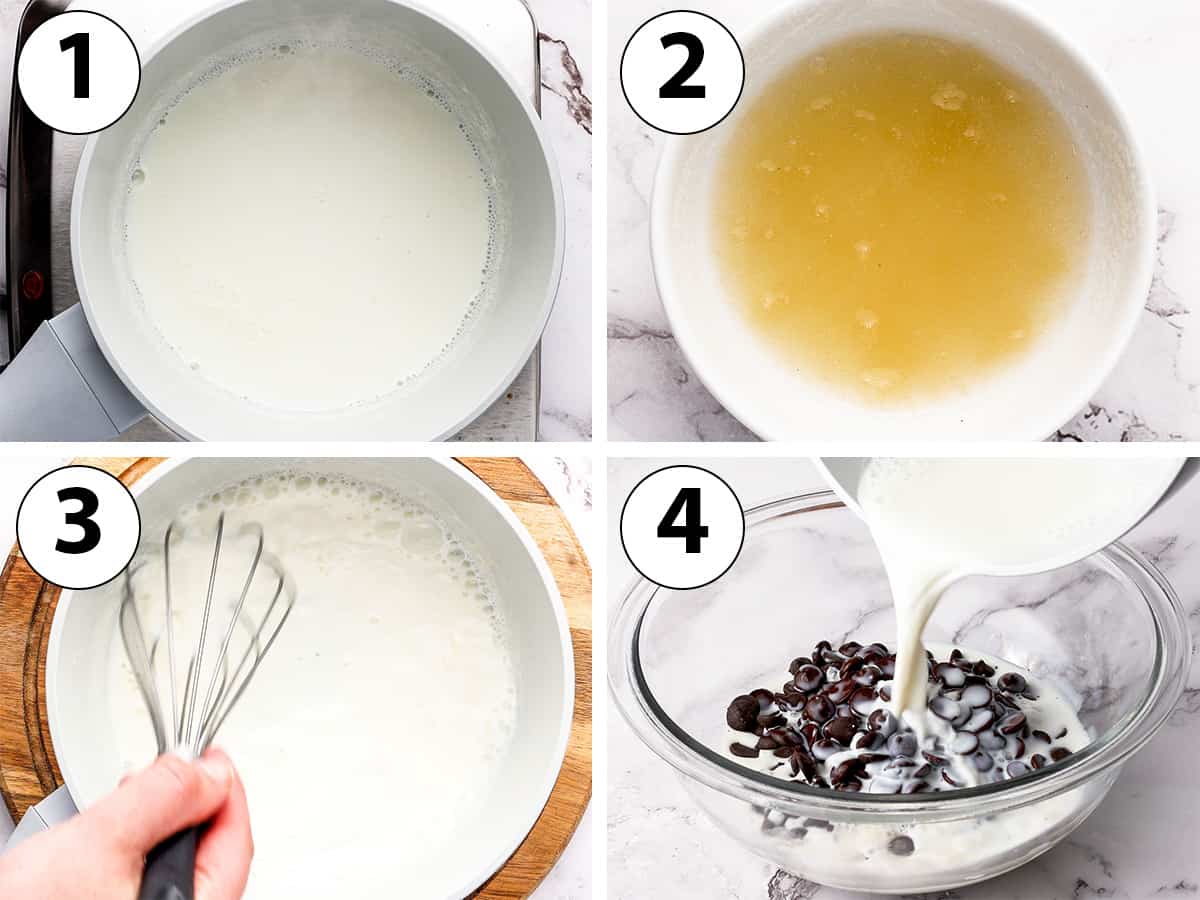
- Photo 1: Place the Milk in a small saucepan and turn on low heat. Bring to a simmer; no need to boil here.
If you are also using Honey or Glucose Syrup - or flavouring the cream - add it to the milk at this stage too.
- Photo 2: While the milk is heating up, mix the powder gelatin with a little bit of cold water. Mix well then leave for a few minutes until it solidifies into a thick paste.
- Photo 3: Once the milk starts to simmer, remove it from the heat and add the rehydrated gelatine. Whisk well until all of the gelatine has dissolved.
- Photo 4: Place the Chocolate in a medium size heat proof bowl and pour the hot milk mixture over it. Leave it for a couple of minutes to allow for the milk to melt the chocolate.
If using Couverture Chocolate (usually in the form of Callets or Pistoles), you can use it as is. If using a Chocolate Bar, finely chop it first before adding the milk.
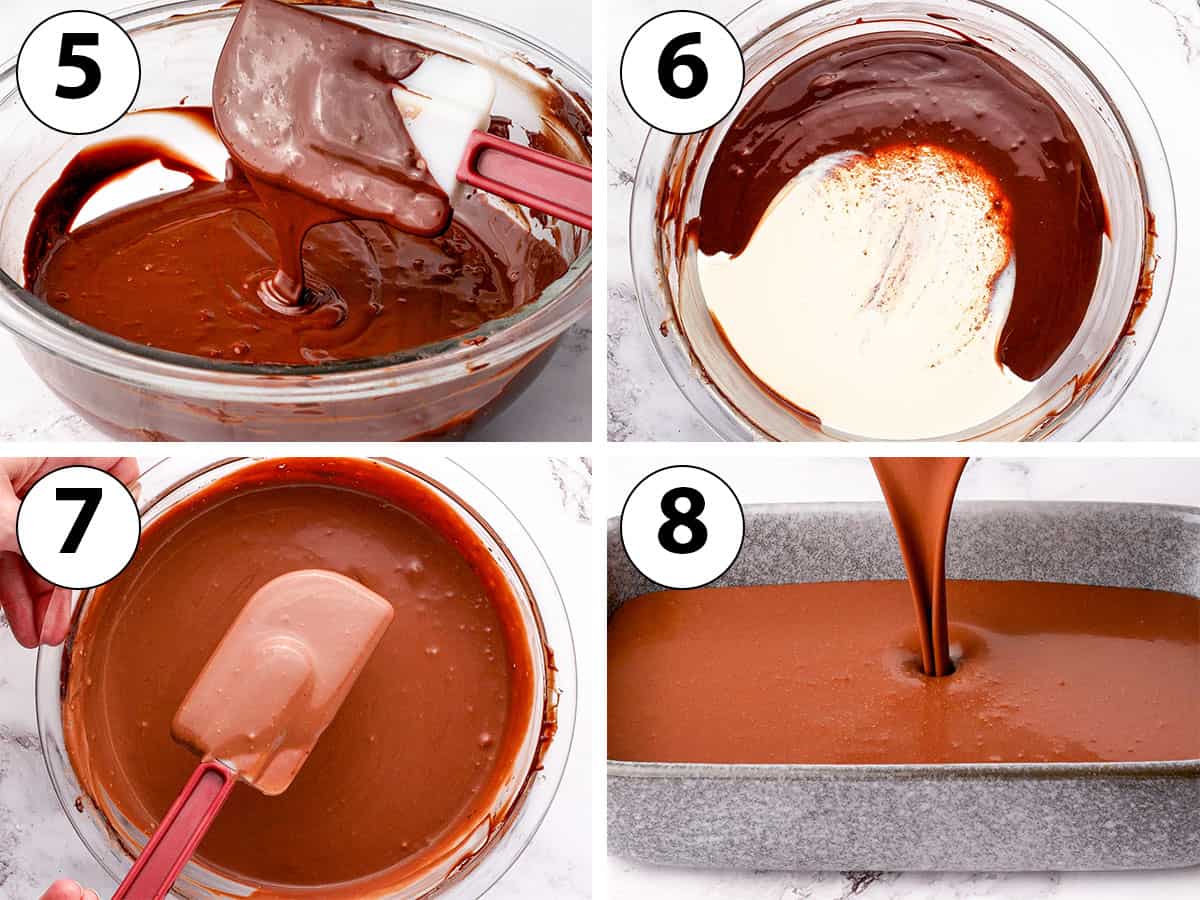
- Photo 5: Stir with a heat-proof spatula until the chocolate has completely melted and is smooth.
If the milk wasn't hot enough when you add it over the chocolate, it is possible that some small chunks of unmelted chocolate remain. You can finish melting it over a double-boiler or for a few seconds in the microwave but be careful not to burn the chocolate.
- Photo 6: Pour the cold cream over the melted chocolate.
- Photo 7: Gently stir in circular movements until you get a very smooth, fluid mixture. It will appear to be very runny - that's normal!
You can use an immersion blender to get the perfect emulsion here, but be careful not to move the blender too much when you blend or it will create a lot of air bubbles.
- Photo 8: Pour the namelaka into a small dish (such as a brownie pan) and cover with plastic wrap touching its surface. Chill for at least 8 to 10 hours (or overnight) before using.
Once it has set, you can transfer it into a piping bag or use directly as desired.
Pro Tip: for a lighter, fluffier texture close to Chocolate Whipped Ganache, you can also lightly whip the Namelaka once it has finished chilling!
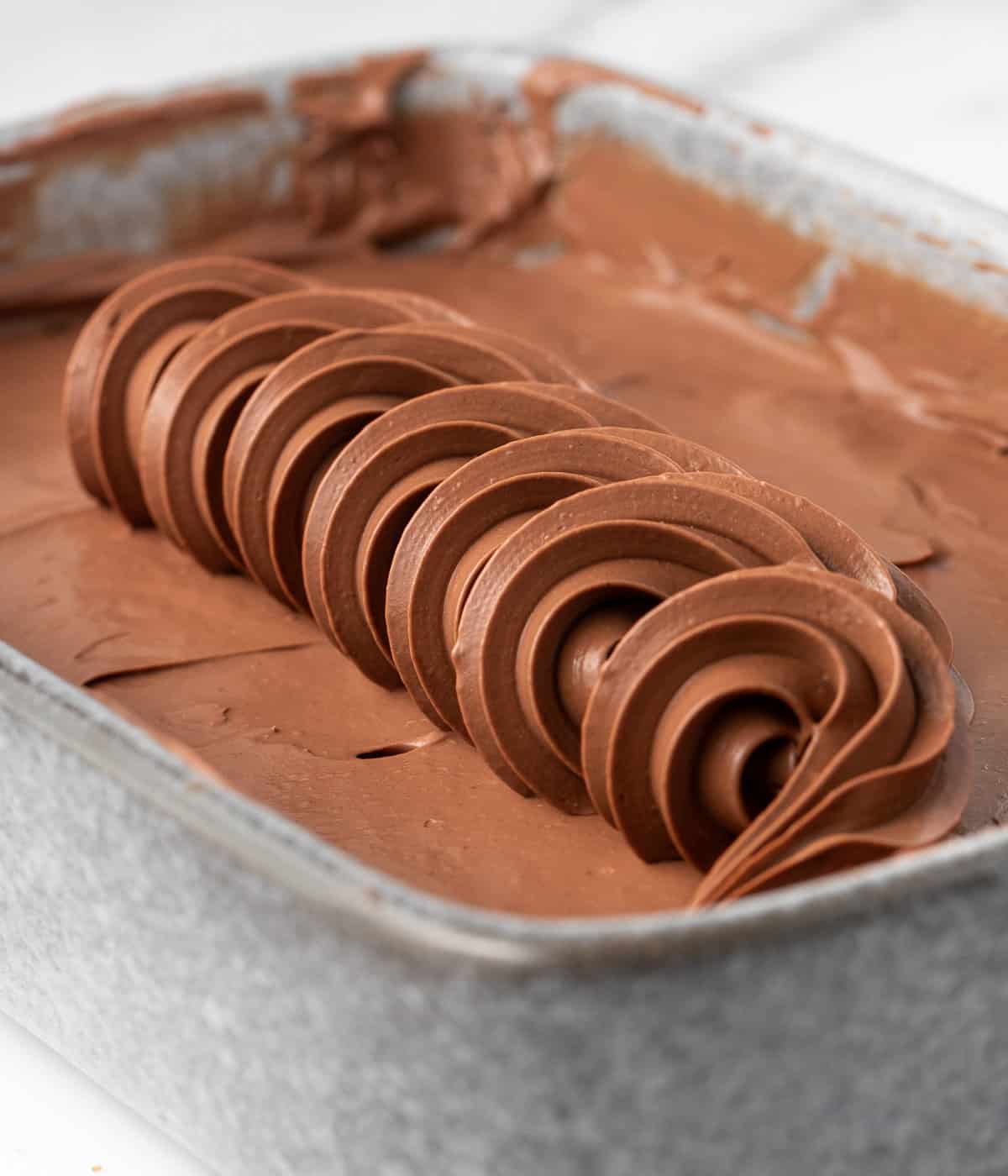
Recipe FAQs
Both are relatively similar in terms of texture and flavours, but are made with slightly different ingredients. A Chocolate Crémeux is made from a Crème Anglaise Base (egg yolks, sugar, milk / cream and chocolate) to which you add gelatine. Namelaka does not contain any eggs.
A ganache is a simple mix of Cream and Chocolate, usually to a 1:1 ratio. Namelaka is relatively similar to a ganache in the way that it is prepared but contains a mix of milk and cream as well as gelatine. Namelaka is has a much smoother, silkier texture while a ganache is rather stiff and intense in flavour.
For the best results, use a good quality cooking chocolate (finely chopped) or preferably Couverture chocolate (that usually comes in the form of callets or pistoles). Do not use chocolate chips or compound chocolate here.
Yes, although you will need to use a higher ratio of chocolate to make the namelaka. That is because white and milk chocolate contain less cocoa butter than dark chocolate. The cocoa butter is essential to help the cream set with the right texture.
- To make white chocolate namelaka, use 280 gr of white chocolate (instead of 200gr)
- To make milk chocolate namelaka, use 270 gr of milk chocolate (instead of 200gr)
I have not personally tried this recipe with agar. The main issue is that agar starts to set as soon as its temperature drops, which would make the melting of the chocolate into a smooth, fluid mixture very challenging.
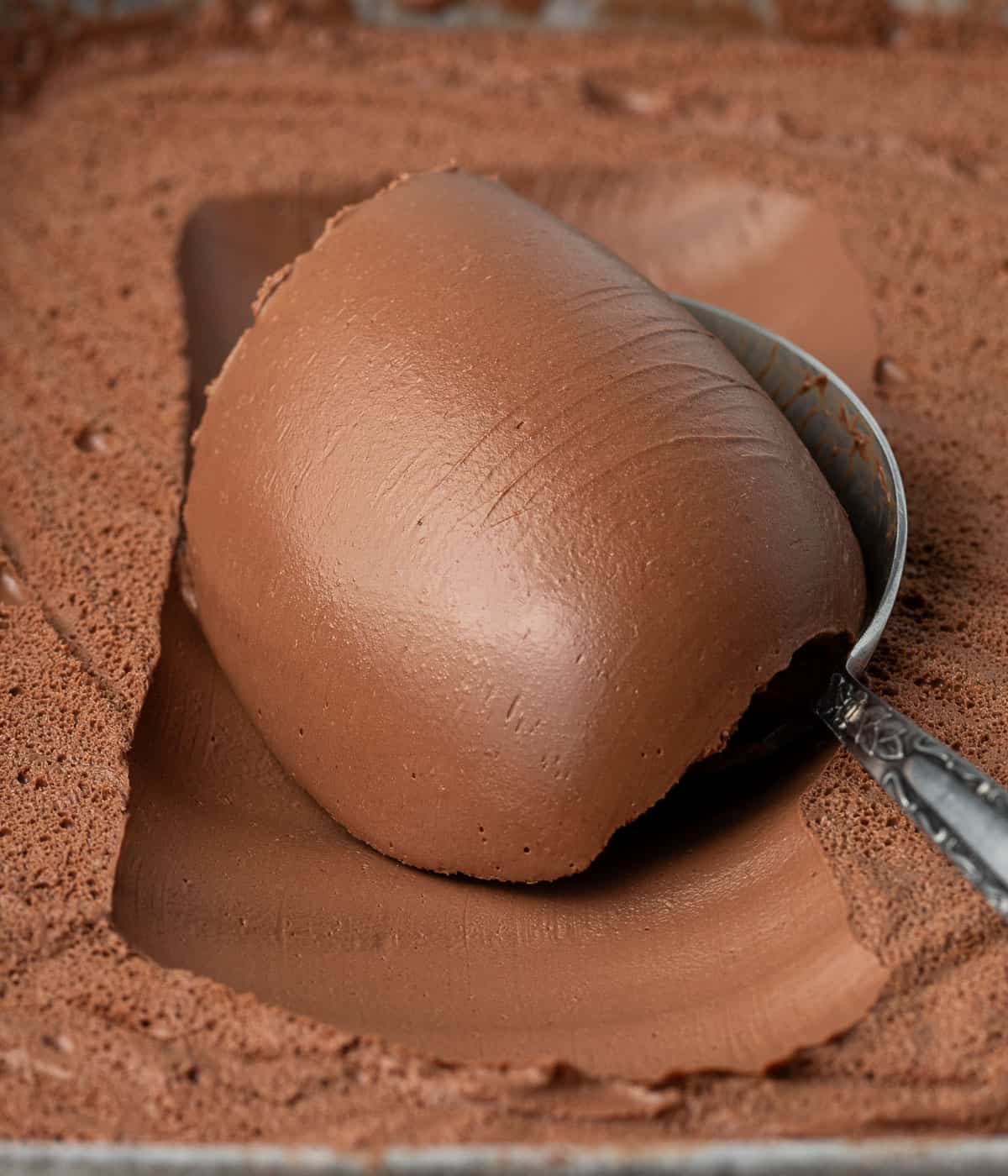
Tips for Success
- When melting the chocolate with the milk / cream, use an immersion blender instead of a spatula to create the best possible emulsion. Be careful not to move the blender up and down at all or you will create lots of air bubbles.
- Don't skip the long chilling time! It is really important for the cocoa butter to slowly crystallise in order to get that deliciously smooth texture and silky melt-in-your-mouth taste.
Troubleshooting
- The chocolate is grainy or not fully melted: this can happen if the milk has cooled down before you pour it over the chocolate. You can carefully finish melting the chocolate over a double boiler or for a few seconds in the microwave, but be careful not to burn it.
- The cream is not setting: this can happen if you use a chocolate with a lower percentage of cocoa butter (such as milk or white chocolate - see faqs section above). It could also mean that you did not use enough gelatine or simply did not rest the cream for long enough.
How to use Namelaka
- As a filling for Tarts and Tartlets (substitute the ganache in my Chocolate Ganache Tart for Namelaka for example) or inside pastries such as Choux Buns (Cream Puffs) and Choux au Craquelin.
- As a filling for a layer cake, or used in an Entremet or Mousse Cake.
- Used as a frosting or decoration for cakes, pastries or cupcakes.
Storing & Freezing
This chocolate cream can be stored in the fridge in an airtight container (covered with plastic wrap touching the surface of the cream) for up to 3 days. I don't recommend freezing it.
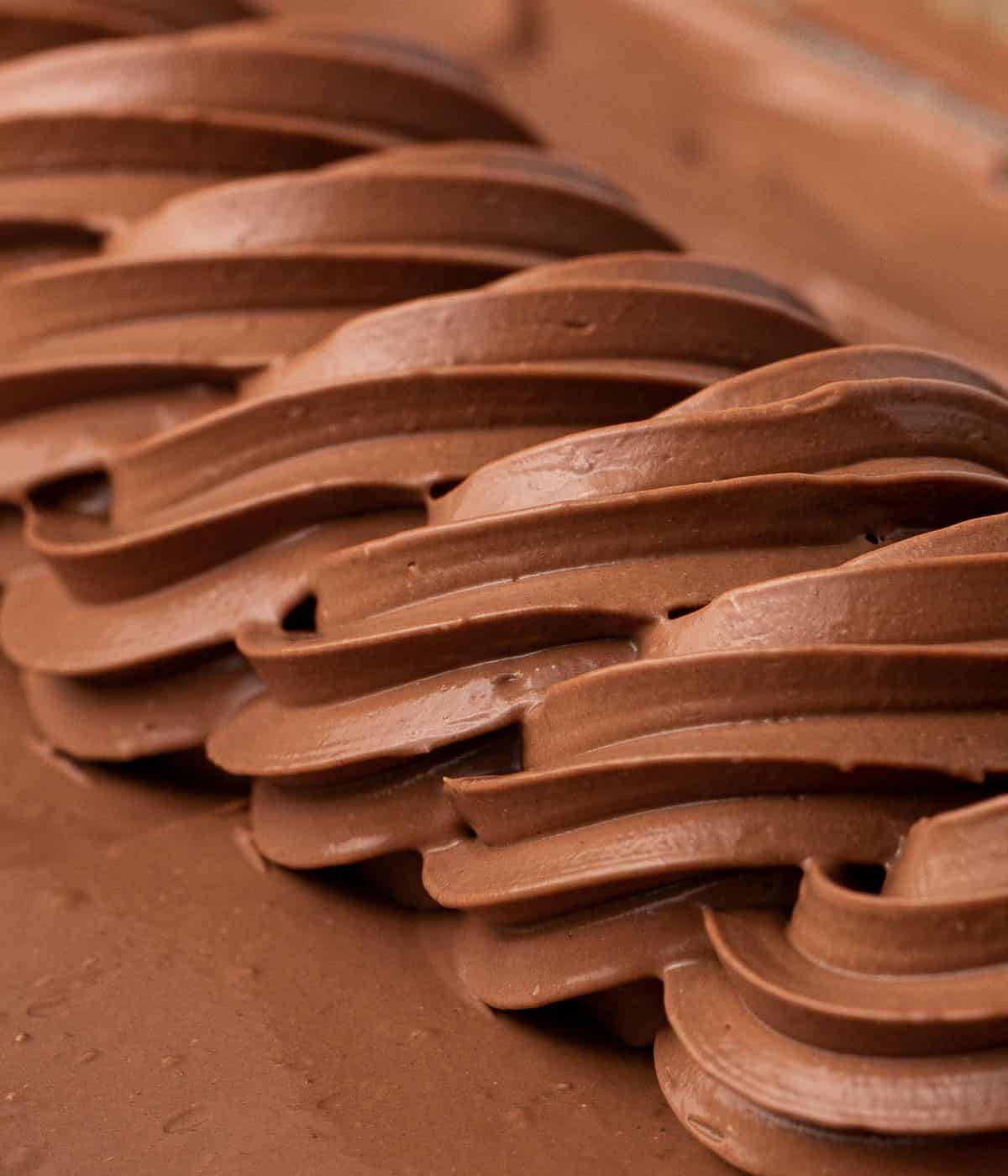
Made this recipe?
Let us know if you liked it by leaving a comment below, and tag us on Instagram @a.baking.journey with a photo of your creation!
Recipe
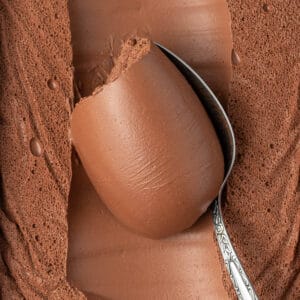
Namelaka
Ingredients
- 200 gr Couverture Dark Chocolate, 70% - or good quality dark cooking chocolate
- 180 ml Full Cream / Whole Milk
- 30 gr Glucose Syrup or Honey - optional, see note 1
- 4 gr Gelatine Powder - plus 1 tablespoon cold water
- 360 ml Thickened / Heavy Cream - min 30% fat content
Disclaimer
I highly recommend using the measurements in grams & ml (instead of cups & spoons) for more accuracy and better results.
Instructions
- Place the Chocolate in a medium size heat-proof bowl. If using a Chocolate Bar (instead of couverture chocolate callets or pistoles), finely chop it first.
- Place the Milk (and optionally glucose syrup or honey - see note 1) in a small saucepan on low heat and bring to a simmer.
- While the milk is heating up, place the gelatin powder in a small bowl. Add one tablespoon of very cold water and mix well. Leave for a couple of minute or until it solidifies into a thick paste.
- Once the milk starts to simmer, remove it from the heat and mix in the gelatine until completely dissolved.
- Pour the hot milk mixture over the chocolate and leave for a couple of minutes to allow for chocolate to melt. Using a heat-proof spatula, gently stir in a circular motion to mix the milk and chocolate until completely smooth, shiny and emulsified (see note 2).
- Pour in the cold Heavy / Thickened Cream and stir in small circular movements with the spatula until fully combined (see note 3). It should look smooth, fluid and very runny.
- Pour the namelaka into a small dish and cover with plastic wrap touching its surface. Chill for at least 8 to 10 hours (preferably overnight) before using.
- Once it has set, transfer the namelaka into a piping bag or use directly as desired.
Tried this recipe? Make sure to leave a comment and star rating below!
Notes
- There is no added sugar here so the level of sweetness will solely be based on the type of chocolate you use (the higher percentage of cocoa mass, the more intense in flavour). Optionally, you can use Glucose Syrup or Honey to both sweeten the cream and help with the smooth and shiny texture.
- If the milk wasn't hot enough when you add it over the chocolate, it is possible that some small chunks of unmelted chocolate will remain. You can finish melting it over a double-boiler or for a few seconds in the microwave but be careful not to burn the chocolate.
- Instead of mixing the ingredients with a spatula, you could also use an immersion blender to create the emulsion. But you will need to be very careful not to move the blender too much or up and down when you blend or it will create a lot of air bubbles.


